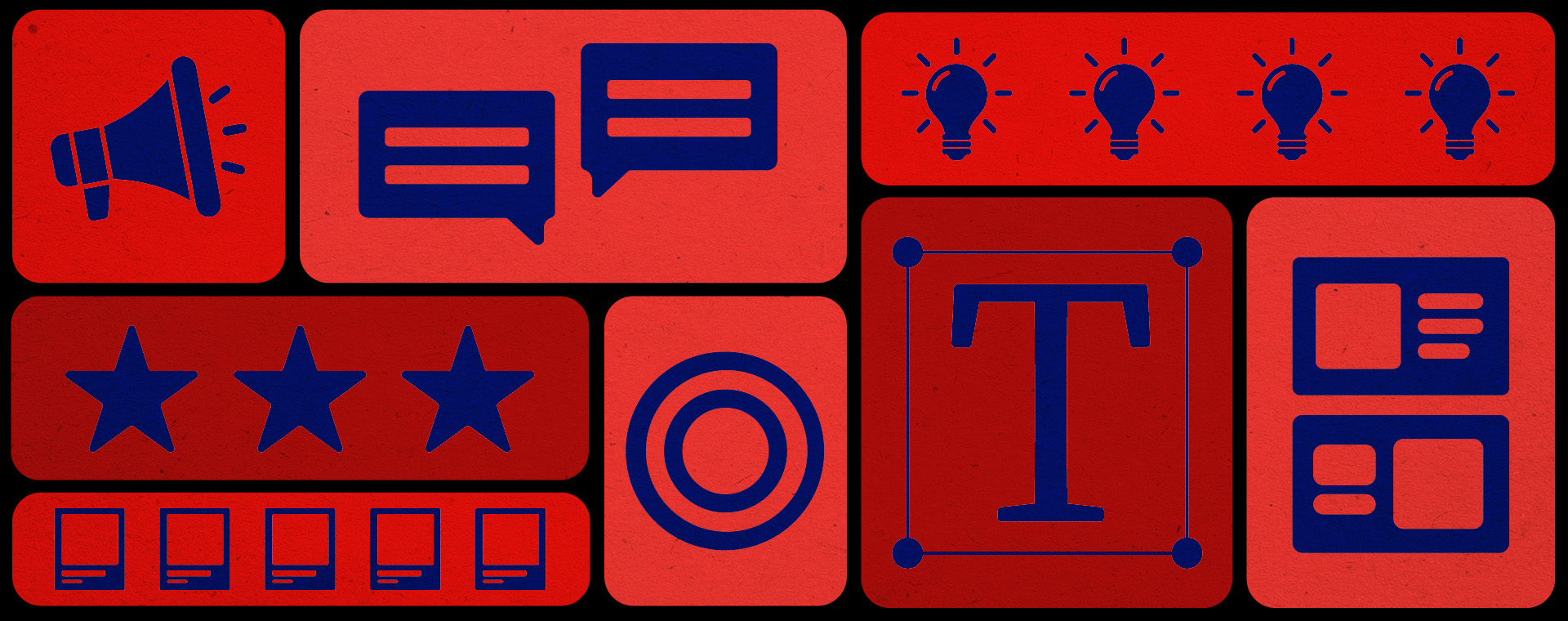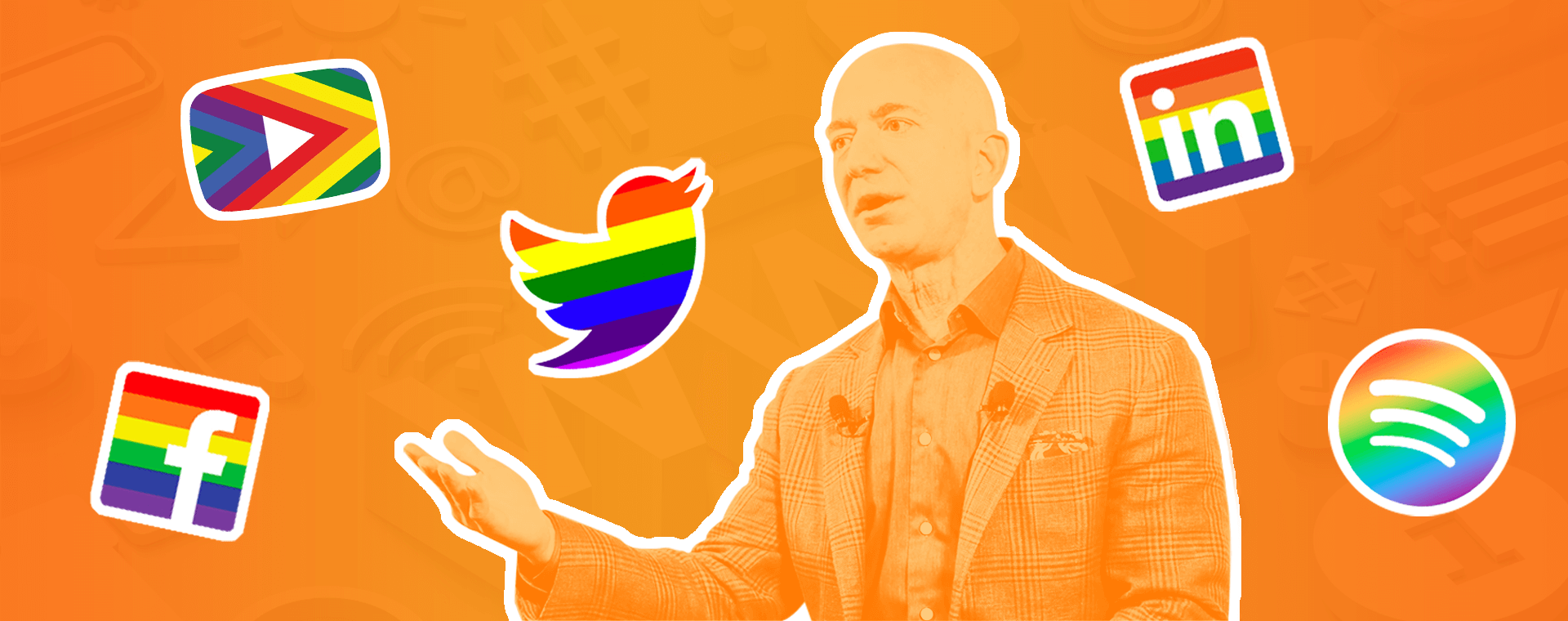Refresh or rebrand: A guide to deciding the future of your brand
By: Ash Larizza
August 6, 2025 | Reading Time: 11 mins
Your brand needs an update but how far do you need to go to fix it?
This is where understanding the difference between a brand refresh and a full rebrand comes into play. You’re about to invest serious time, money, and brainpower into moving your brand into its next chapter. That means no wasted effort, no missed steps, and every move made with purpose. So let’s help you understand the differences.
What’s the difference between a refresh and a rebrand?
A brand refresh is like giving your bedroom a new coat of paint and swapping out the duvet. The layout stays the same, but it feels more current and reflective of you. A refresh updates how your brand looks and sounds without changing its core identity. It might include evolving your logo, refining your messaging, or modernizing your colour palette and photography style. A brand refresh is not a total overhaul. You’re not renaming the company, rewriting your brand story, or shifting strategy. If you’re fundamentally changing who you are or what you stand for, you’re in rebrand territory.
A rebrand is a complete transformation of your business. It redefines who you are and how you show up in the world. Rebrands go beyond visuals, reshaping your purpose, values, mission, and vision. If a refresh is like repainting your bedroom and swapping the duvet, a rebrand is knocking down walls, tearing out the old carpet, and rebuilding the space to match a new way of living. It’s for when your business has evolved at a deeper level and your current brand no longer fits where you’re headed.
Consider a refresh if…
- Your brand looks dated, but your positioning still holds up.
- You want to feel more current or appeal to new audiences without alienating loyal ones.
- Your messaging isn’t landing like it used to but your visual identity still resonates.
- Your brand doesn’t translate well for digital and online experiences.
- You only want to update specific aspects of your branding but not everything.
- You have strong market recognition and lots of brand equity with your current brand.
Consider a rebrand if…
- You’ve shifted your business model or audience.
- You’ve merged, acquired, or want to distance yourself from past baggage.
- Your current brand no longer reflects who you are.
- Your current brand doesn’t reflect your evolving mission, values, or vision.
- You’re outgrowing your current brand.
- Your brand has become outdated in terms of visuals or messaging.
- Your offerings have expanded and your brand architecture no longer supports your business.
What’s included in a brand refresh?
Every refresh is different. It all comes down to what’s holding your brand back. A refresh focuses on the parts that need attention so your brand can show up stronger. Most brand refreshes include at least one of the following:
Visual tweaks
Logo updates are one of the most common and noticeable ways to refresh a brand. Design trends have shifted over time, moving from complex, overly detailed logos to simpler, more flexible ones. A dated logo doesn’t just say “this hasn’t been updated since 2008”. It suggests your entire business hasn’t either.
But logos aren’t the only visual element worth refreshing. If your logo still resonates after 10 years, that’s a sign you’ve built something strong. A good refresh means evolving the surrounding elements to better support what still works about your brand. Think colours, typography, and photography.
Colour, fonts, and photography can date your brand faster than you think. They also may send signals you don’t mean to send. Serif fonts, for example, can convey luxury and heritage but also carry associations with traditional print media. They don’t always match the tone of a modern, digital-first brand. If your business has become more digitally focused in recent years, a subtle font change can help reflect that evolution often in a way your audience will feel, even if they don’t consciously notice it.

Messaging updates
What you say and how you say it plays a huge role in helping your audience connect with your brand. Communication styles are always evolving, with new generations bringing new expectations for tone and language use. Updating your messaging strategy might be driven by broader cultural shifts, a new target audience, or simply a deeper understanding of what makes your business great.
Maybe when you first launched, your messaging was all about being technology driven, innovative and logical. But now, you’ve achieved that connotation, your tech is widely understood and you’ve realized it’s your people who truly set you apart, and you want that to come through. A refresh in tone and storytelling can help shift the spotlight, creating a more authentic connection with the clients you want to attract today.
Asset polishing and updates
If you’re making any of the changes above, they need to carry through to your key marketing and communication assets. There’s no point in updating your colour palette if it never makes it to your sales sheets, conference banners, or business cards. A new messaging strategy is a great reset but it won’t mean much if your website and blog posts are still saying the old stuff.
The level of updates your assets need comes down to two things: how significant the refresh is, and how well those assets are currently performing. Sure, you can update your colours and fonts across the website but if users are struggling to find what they need, and your team is constantly wrestling with the CMS, it might be a good time to rethink the website entirely. Regardless of whether or not you pursue a refresh or a rebrand, there will be assets that have to be converted to your evolved branding.
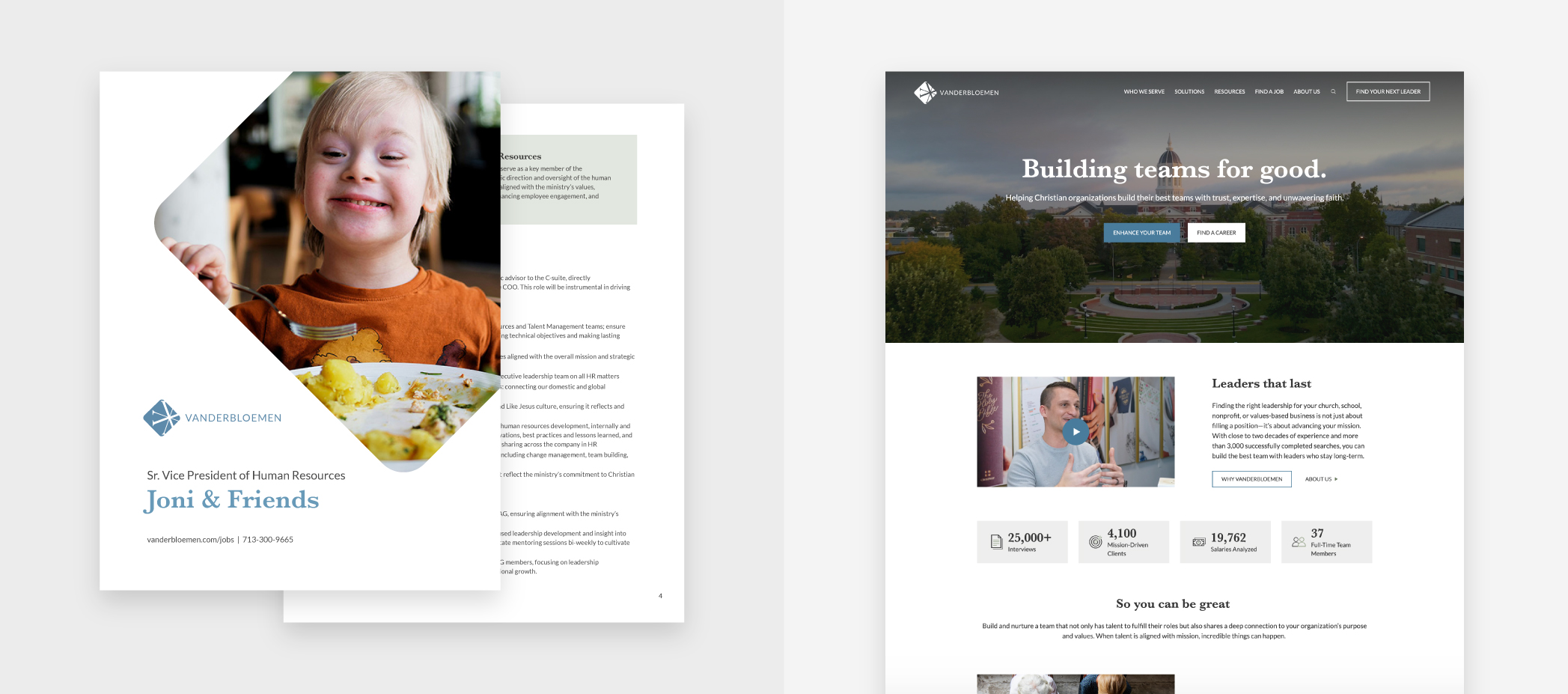
Two brand refresh examples with very different starting points
Green Leaf Consulting: A brand refresh to match their digital-first approach
Green Leaf Consulting didn’t need a full rebrand because their name and positioning were solid. They excelled at delivering innovative tech strategies but they had fallen behind with their digital presence. Stryve helped refresh their visual identity and messaging to better reflect who they are today. That meant modernizing their logo, tightening up their colour palette, and shifting their tone of voice to be more confident and digitally relevant without losing the grounded, approachable feel they were known for. In terms of asset updates, their website required the biggest refresh. The result was a more cohesive, scalable brand that feels familiar to their existing audience, maintains elements of brand equity but better positions them for today’s digital landscape.

Instagram’s logo evolution: a masterclass in brand refresh strategy
Instagram’s logo has changed significantly since its launch in 2010, but each evolution has been a brand refresh, not a rebrand.
The original 2D camera icon underwent its first refresh to address trademark issues. It needed to function as a logo, not just an app icon, while still feeling familiar to users. Then came the major 2016 update: a bold move driven by a shifting digital landscape, increased competition, and a platform that had grown far beyond filtered food photos. The new logo introduced a vibrant gradient and minimalist camera outline. It was modern, flexible, and more reflective of Instagram’s broader role in culture while still nodding to its vintage roots through colour.
In 2022, the gradient got a refresh of its own, with a more dynamic, 3D feel. That update also introduced Instagram Sans, a custom typeface designed to unify the brand’s visual identity and support a more expressive, creator-first experience.
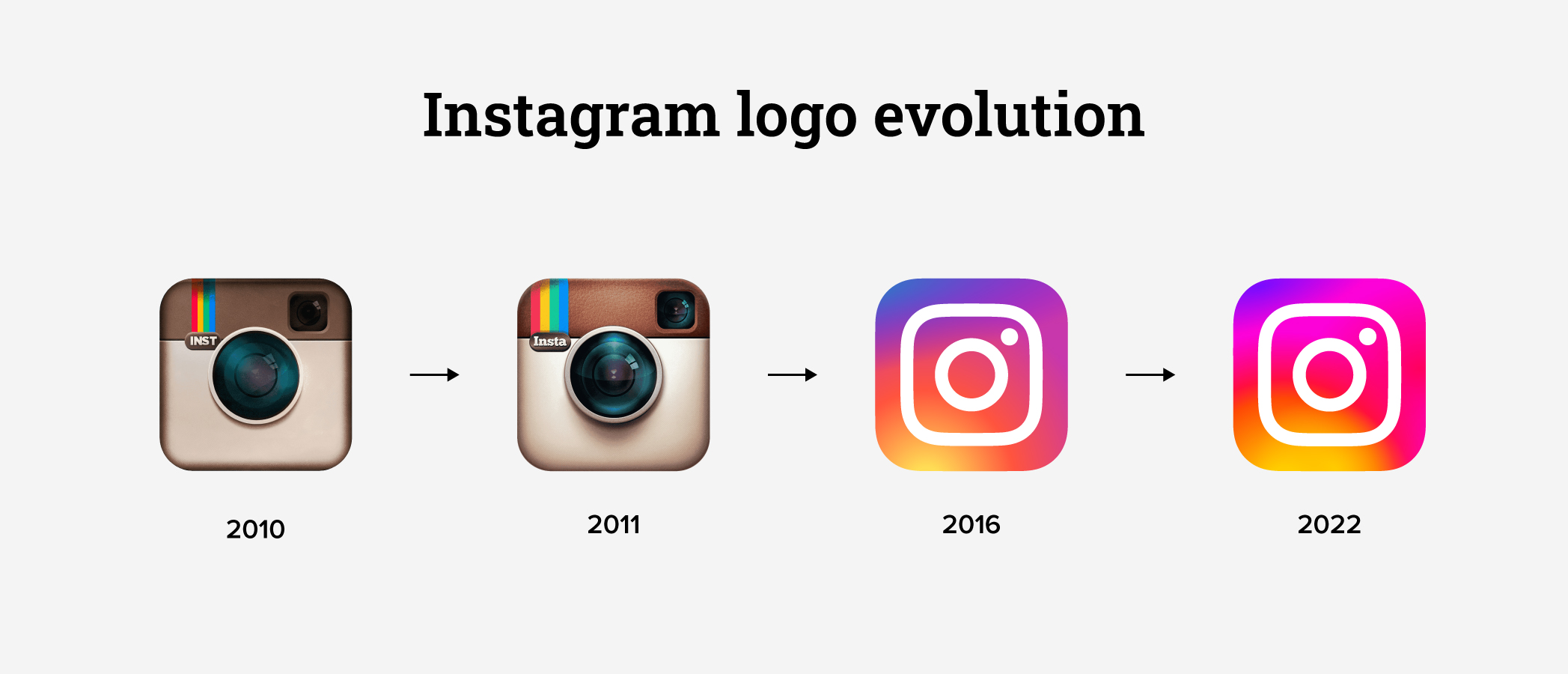
What’s included in a rebrand?
Since a rebrand is a much bigger undertaking than a refresh, it includes everything a refresh would and then some. There’s a lot more work on the front-end from a strategic standpoint before you ever begin to touch visual expression.
It starts with strategy and research
While a brand refresh involves strategic thinking, a rebrand demands deeper, more intensive strategy work. That phase can take months and shouldn’t be rushed. You don’t want to risk confusion, misalignment, and a very expensive do-over.
Before names are brainstormed or logos are sketched, research comes first. This includes surveying and interviewing the people who matter most: users, clients, employees, and key stakeholders. What does your business mean to them? How do they view you? What is working and what is not? It also includes a review of the competitive landscape. Where are the gaps your brand could own? What are competitors doing? How can you stand apart?
This research is most effective when led by an agency partner. As an unbiased third party, they come in with fresh eyes and know exactly what questions to ask. They can uncover insights internal teams often miss and avoid bias that can lead research in the wrong direction. This ensures you have the clarity and objectivity needed to move into the next phase with confidence. A successful rebrand is not just about looking different. It is about being rooted in real insights and built to move your business forward with purpose.
Renaming
A new name doesn’t have to be part of a rebrand but if it’s on the table, then it needs to be made carefully.
Changing your name means walking away from everything that name has built over the years: brand equity, recognition, SEO value, market share, and any historical assets that will no longer align. Sometimes it’s the right move but it should never be taken lightly.
That shouldn’t scare you away from the idea though. There are plenty of valid reasons to pursue renaming. Maybe your name no longer reflects what you do. Maybe you’ve merged or been acquired. Maybe the name carries baggage you’d rather leave behind, or maybe it just doesn’t connect with your audience because it’s hard to remember, say, or spell.
Yes, you’ll need to rebuild your SEO and reintroduce yourself to the market. But if the new name is bold, strategic, and meaningful, it could be the key to launching your brand into its next era.
New positioning
In a brand refresh, you’re refining your existing positioning, not reinventing it. Your vision, mission, and value proposition likely still hold true, but they may need to be updated to reflect how your business has evolved. In a rebrand, you’re rewriting the foundation. A rebrand means your business has changed in a meaningful way. Your vision for the future has shifted, your mission has evolved, or you’re offering something entirely new. This means your value proposition needs to change to reflect this direction, meaning a new mission, vision, values, and messaging.
Design system overhaul and new visual expression
This is the part that comes to mind for most people when they hear the word rebrand: a new look. A rebrand is never complete without a full visual identity overhaul that’s formalized in a new set of brand guidelines. That means a fresh logo, iconography, typography, photography style, colour palette, tone of voice and more that all work together to signal one thing: this is the new you. A rebrand is your statement to the world that things are different now and the best way to deliver that message is through a bold, cohesive visual expression that backs it up.
Two rebrand examples with different purposes
Amplify Care: a rebrand that reflected leadership in the digital health space
Formerly known as the eHealth Centre of Excellence (eCE), Amplify Care needed more than a new look. As a not-for-profit leader in digital health, their name and brand no longer reflected their growing influence or future-focused mission.
Stryve led a full rebrand, starting with stakeholder interviews and market research to uncover the values, strengths, and opportunities that would guide the transformation. From there, we facilitated a comprehensive renaming process. We explored hundreds of possibilities before landing on Amplify Care, a name that perfectly captured their commitment to elevating clinician voices and improving care through digital innovation.
The rebrand included a new visual identity bolstered by a new design system: a thoughtful logo, custom brand elements, a balanced colour palette, and updated photography all designed to convey connection, trust, and support. We built a brand toolkit and launch-ready assets to help their team bring the new brand to life seamlessly and updated their suite of marketing assets including one pagers, business cards, conference banners, and of course, their website.
This wasn’t just about looking different it was about stepping into a new era with clarity, purpose, and momentum.

Twitter to X: A rebrand attempt to signal a new vision
In 2023, Twitter underwent a questionable rebrand, transforming into X under new owner Elon Musk. The change wasn’t just a logo update it was a statement about Twitter’s evolving future, with a new leader, new name, new logo, and a new vision (which, as of now, is apparently still unfolding).
While this rebrand is a textbook example of a full rebrand versus a refresh, it also highlights a key point: Twitter didn’t really need a rebrand. With one of the strongest brand recognitions and equities in the world, Twitter was already a household name. Two years later, many people still refer to it as Twitter, and “tweeting” remains the common term despite X’s insistence on the new name. Could they have eventually considered a refresh? Of course. Even the strongest brands update, and that’s how they stay relevant, but the complete rebrand was just not necessary.
The rebrand to X was a bold move that garnered plenty of attention but it wasn’t driven by any real shift in market demand. Rather, it stemmed from Elon’s desire to reshape the platform into something broader, beyond its original scope, which wasn’t necessarily a move that aligned with Twitter’s established identity.
Planning ahead: budget, timelines, and capacity
Planning ahead means setting realistic expectations for the process whether you are doing a refresh or a rebrand. The more ambitious the changes, the longer it will take and the more it will cost in terms of team commitment, time, and money. It also means preparing for the level of introspection involved. Whether you’re refreshing or fully rebranding, the process often opens the door to brutal honesty and tough questions. Executive leaders and key stakeholders will bring different perspectives, and aligning on those perspectives can take time. Your agency’s role is to guide and moderate these conversations, but your team needs to be ready to participate in that analysis and have those big discussions about who you are, what you stand for, and where you’re headed.
To help you visualize what this could look like, here are a few sample scenarios of what timelines to potentially except:
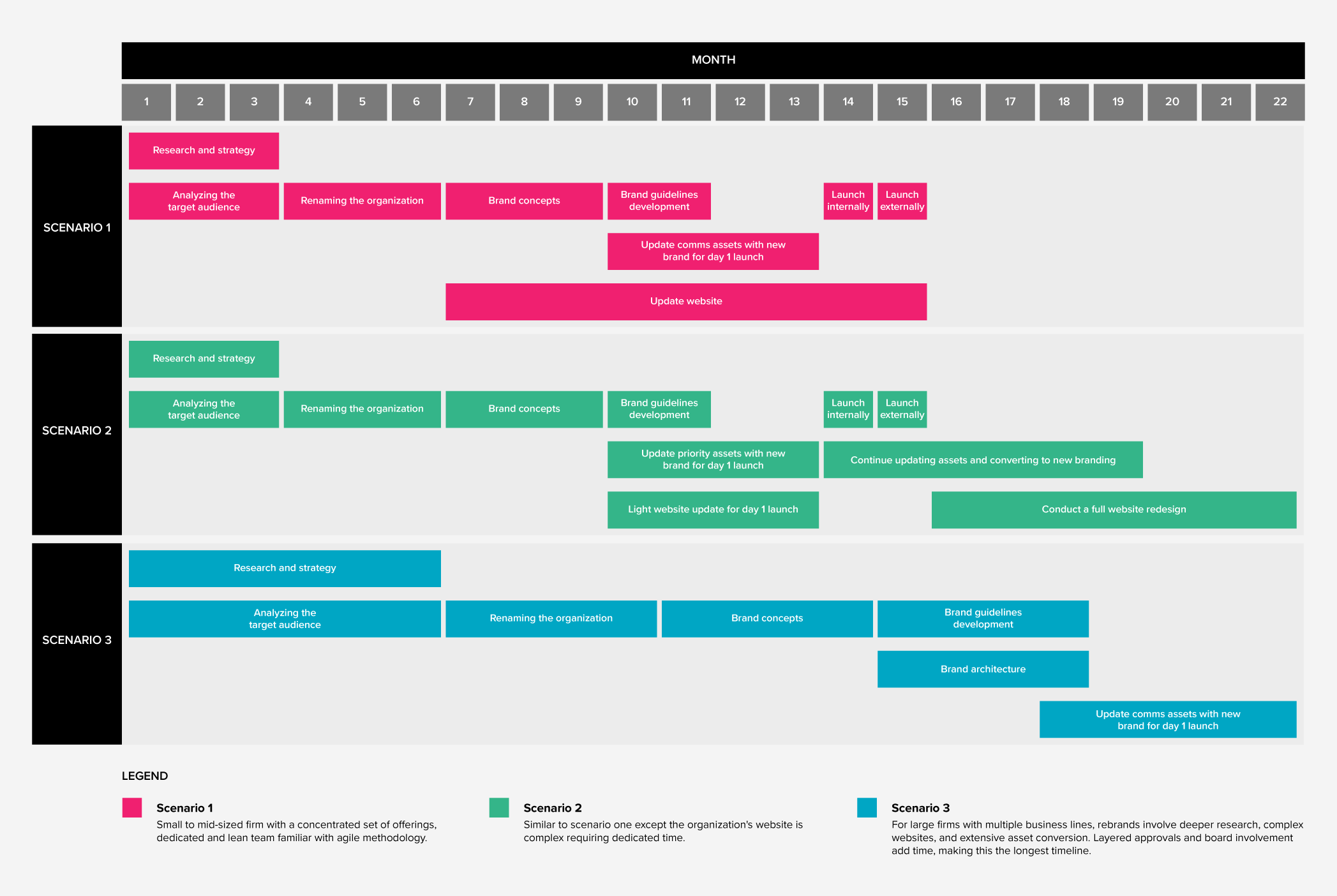
Make the right move for your brand
Deciding between a refresh and a rebrand takes honest reflection and some strategic conversations. To make it easier, we’ve created a simple worksheet you can use to work through the key questions and see which path might be right for your business. It’s a quick self-assessment that can help you feel more confident about your next move before you start talking to agencies.
If you work through the questions and still feel unsure, that’s normal. Sometimes it takes an outside perspective to see things clearly. We can help you unpack where your brand stands today, figure out what’s holding it back, and guide you toward the right level of change. Explore more of our branding work or reach out to start a conversation about what your next chapter could look like.






